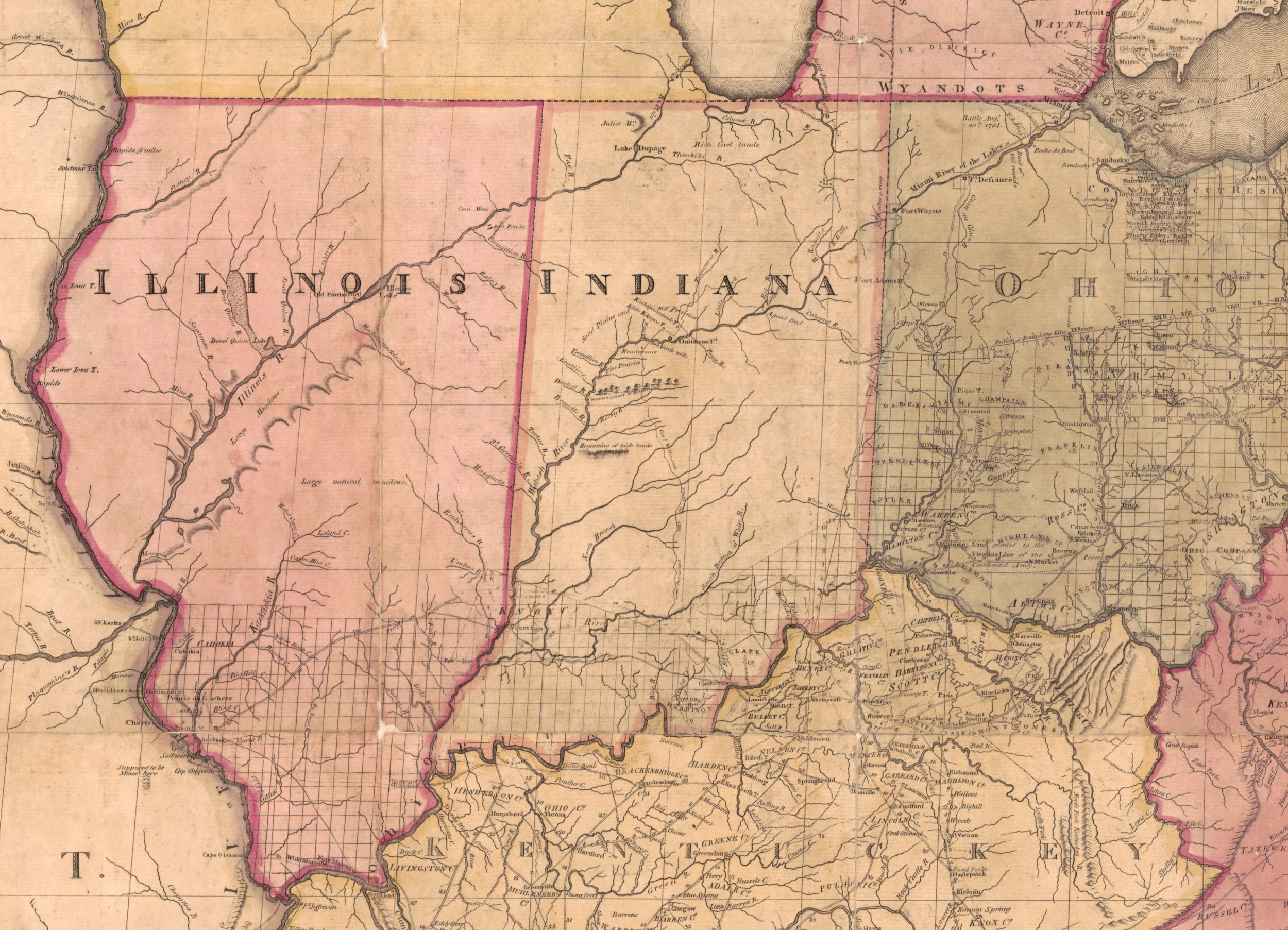27 January 2022
The state of Indiana is named, generically, for the Indigenous people of North America, but obviously the name does not acknowledge the specific Indigenous peoples who have lived and are still living on that land. The land was the home to the Mississipian peoples (1000–1500 C.E.), and at the time of European contact the Shawnee, Miami, and Illini peoples, among others, were living there. Other peoples who have lived in what is now the state of Indiana since European contact have included the Kickapoo, Ottawa, Potawatomi, Wea, Piankashaw, Chippewa, Delaware, Wyandot, Kaskaskia, and Eel River tribes.
Indiana first appears in English as a woman’s name. For instance, it appears as the name of a character in Richard Steele’s 1722 play The Conscious Lovers. This use of a person’s name, however, is more likely a reference to colonial India than to the people of North America.
When the name was first applied as a name of a territory, it was not to what now constitutes the state of Indiana, but to a region of some 5,000 square miles in what is now West Virginia. The territory was ceded by the Iroquois Confederacy to a Philadelphia trading company in 1768 as compensation for goods seized from them in a 1763 raid. In 1776, the state of Virginia laid claim to this territory, and in a long-running legal battle that concluded in 1798, Virginia secured the territory for itself and discarded the name Indiana.
The name was revived in 1800 when the Northwest Territory of the United States was divided and the name given to the western portion, the eastern portion being Ohio. From the 1800 Act to Divide the Territory of the United States North-West of the Ohio, into Two Separate Governments:
That from and after the fourth day of July next, all that part of the territory of the United States north west of the Ohio river, which lies to the westward of a line beginning at the Ohio, opposite to the mouth of Kentucky river, and running thence to Fort Recovery, and thence north until it shall intersect the territorial line between the United States and Canada, shall, for the purposes of temporary government, constitute a separate territory, and be called the INDIANA Territory.
Subsequently, the Indiana Territory was reduced in size when the Michigan and Illinois Territories were separated from it. Indiana became the nineteenth state in 1816. Residents of the state are popularly known as Hoosiers, a mysterious name with no known etymological connection to the name Indiana.
Sources:
American Indian Center of Indiana. Accessed 10 December 2021. http://www.americanindiancenter.org/info.php?pnum=10
Everett-Heath, John. Concise Oxford Dictionary of World Place Names, sixth ed. Oxford: Oxford UP, 2020. Oxfordreference.com.
Hodgin, Cyrus W. The Naming of Indiana. Papers of the Wayne County, Indiana Historical Society, 1.1. Richmond, Indiana: Nicolson Printing, 1903, 6–10. HathiTrust Digital Archive.
Oxford English Dictionary, third edition, September 2009, modified March 2019, s.v. Indiana, n.
United States Senate. Amendment to An Act to Divide the Territory of the United States North-West of the Ohio, into Two Separate Governments (H.R. 73, 6th Congress). 21 April 1800.
Victor, Benjamin. An Epistle to Sir Richard Steele, on his Play, Call’d, the Conscious Lovers. London: W. Chetwood, et al. 1722. 15. Eighteenth Century Collections Online (ECCO).
Image credit: Abraham Bradley, Jr., 1804. Library of Congress.

